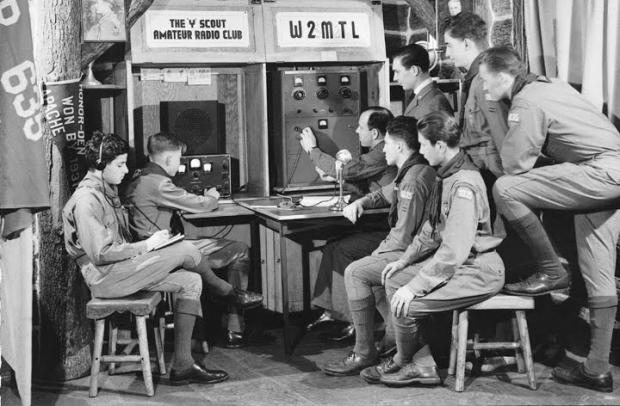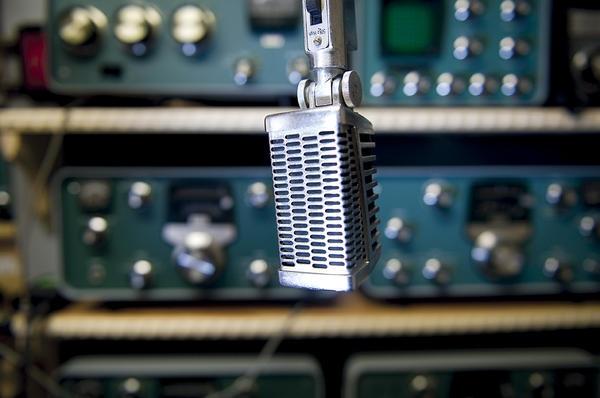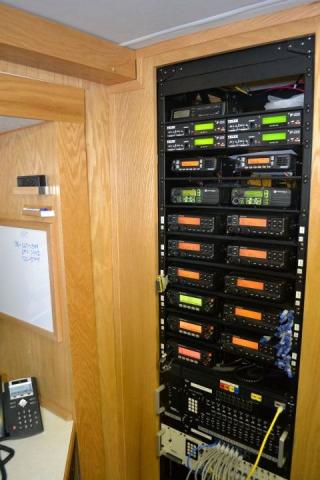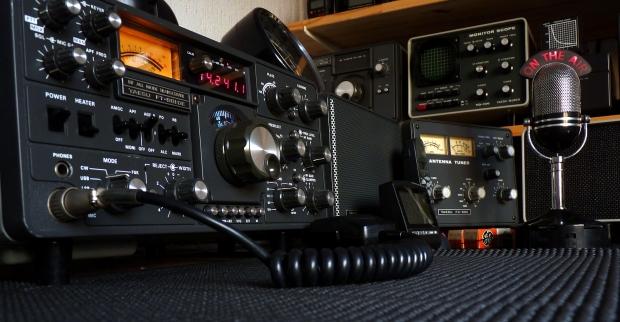Over the last two years or so, I have found myself wanting to expand out of my maker comfort zone and push myself to new and challenging aspects of the maker culture. My first major step on this road was to begin teaching STEM classes at my local maker space, theClubhou.se, something that has now become a major part of my life. Naturally, I continued to feel the need to keep pushing myself deeper into the DIY world and found that I deeply wanted to become a HAM radio operator.

Luckily, a good friend of mine just happens to be the president of the largest amateur radio club in the area, and after some consultation with him, I finally felt that I was ready to tackle this next step in my evolution as a maker. I will get more into this process in just a bit, but first I would like to talk a little about why amateur radio still matters in today's internet and mobile connected world.
A lot of people that I have talked to over the past two to three months have indicated that they feel that there is no longer a need for amateur radio, and with the internet now being at our fingertips almost 24/7, communication is faster, easier, and more efficient than ever. I almost believed them until I paid a visit to the Amateur Radio Club of Augusta during their monthly meeting a few weeks ago.
When I first walked into the meeting room, I was greeted by several old timers who had obviously been into this hobby for many years. Rather than putting me off, this instantly piqued my interest as some of the older hobbyists are the best to talk to when choosing to enter a new hobby. I quickly entered into conversation with several of the older members, and when asked about the state of the hobby, all of them said that amateur radio is not dying, but rather it is thriving now more than it has in the past two decades.

Some of them attributed this rise in popularity to the fact that cheaper equipment has hit the market, while others feel that it is just the natural ebb and flow of the hobby. Before the official meeting began, I noticed several members enter the room who appeared to be in their mid-20s to late-30s, something I had not expected to see. Two of these members were volunteer firefighters who briefly mentioned that amateur radio is still a major part of disaster communications and that its ability to function on battery power makes it a major asset to have in a community.
At the end of the meeting, Rusty Welsh, Deputy Director of Columbia County Georgia's Board of Commissioners, was kind enough to give me a tour of the mobile response vehicle. Upon entering the converted motor home, the first thing I noticed was the huge stack of radios tucked neatly into what appeared to be a converted server rack.

While I thought that most of these radios were police and fire specific, Welsh explained that they covered almost the entire range of amateur radio bands, and for a good reason. Welsh explained that when a disaster such as a tornado, ice storm, or any event that kills power to the majority of the community strikes, amateur radio continues to function as most operators have battery backups that can keep their rigs running for days.
While emergency services also have battery backups, sometimes the police, firefighters, and search and rescue teams will ask amateur radio operators for assistance in relaying messages, coordinating efforts, and even acting as a dispatch station. It was at this point that I realized the importance of keeping the amateur radio hobby alive.
That night after returning home, I jumped onto the internet and began researching as much as I could. As it turns out, amateur radio has played an important part in disaster relief efforts for the better half of the past century. As for the maker side of things, amateur radio can be utilized for so many things. Makers who enjoy launching high altitude balloons often rely on amateur radio to locate and track their balloon's payload as it crosses over the US, while others use it to track satellites and space stations. There are also those out there who use it for data transmission from one PC station to another.

I would soon find out just how important amateur radio knowledge is when attempting to track cube satellites, but that is an entire article on itself. After doing my research, and talking to both old-timers and new-comers to the amateur radio hobby, I decided that I needed to be a part of this community, and I needed to become a HAM as soon as possible. Luckily for me, there was a HAM/Cram session taking place not far from my home on April 19.
For those unfamiliar with the nomenclature, a HAM/Cram session is an event held by certified amateur radio operators that combines a study session and subsequent testing later in the day. The class I attended lasted about 6 hours, with 5 hours being study/review time, and the last hour consisting of the actual Amateur Radio Technician test.
The FCC requires all operators of amateur radios that broadcast outside of the Citizen Band and the Family Radio band to obtain a license before they can transmit over the airwaves. This is mainly because of the dangers of operating high-power radio frequency equipment, as well as to prevent any interference with other RF devices. Knowing how to stay safe and prevent interference requires specific knowledge of how two-way radios work and how they can harm humans and property.
The FCC has devised three classes with corresponding tests to ensure that licensed amateur radio operators know what they need to know to be compliant with the rules and regulations that the FCC has put forth for amateur radio. These three classes are: Technician, General, and Extra Class. The test I took was for the Technician class and allows me to operate an amateur radio as well as a few other things.
The test covers several aspects of two-way radios as well as basic electronics theory, FCC guidelines pertaining to amateur radio, and radio frequency theory. Overall, anyone with a little electronics and math knowledge can pass the test if they take a few hours to study the FCC regulation portion of the test. The test consists of 35 questions with a pass/fail threshold of 9 questions. To make a very boring story short, I missed only 4 questions on my test, and I am now a licensed amateur radio operator.

All in all, my quest to become a HAM took about three weeks total, with only about 10 hours of study. The question is now what do I do with my newly acquired license. I do know that I want to improve my community in some way, and to do that, I am going to join my local chapter of ARES (Amateur Radio Emergency Service) and link up with the three amateur radio clubs in the area. Most importantly, though, I am going to work towards getting my certification to teach amateur radio classes and introduce the Young Makers class I teach to the world of HAM radio.
Furthermore, I hope to dive deep into satellite tracking and eventually be able to pull down data that is being broadcast from cube satellites in an effort to decode and publish it on the web. I would also like to attempt a high altitude balloon launch that captures video and still images of the Earth from the edge of space. My Technician license is good for the next 10 years before I have to renew it, so I think I will have plenty of time to do all of this.
I would also like to write more HAM Radio articles for TweakTown and maybe cover some of the basics of equipment selection and an article or two on satellite tracking. If you have something that you would like to see me write about, please feel free to send me an email or leave a comment on this article. Alternatively, you can find me on Twitter, Google Plus, and Facebook by checking out my author profile here at TweakTown and following the links to my social media pages.

 United
States: Find other tech and computer products like this
over at
United
States: Find other tech and computer products like this
over at  United
Kingdom: Find other tech and computer products like this
over at
United
Kingdom: Find other tech and computer products like this
over at  Australia:
Find other tech and computer products like this over at
Australia:
Find other tech and computer products like this over at  Canada:
Find other tech and computer products like this over at
Canada:
Find other tech and computer products like this over at  Deutschland:
Finde andere Technik- und Computerprodukte wie dieses auf
Deutschland:
Finde andere Technik- und Computerprodukte wie dieses auf